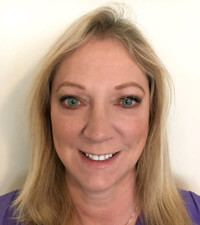Business Planning in Lincoln, NE – 2018
What are your goals for your business in 2018? How do you plan to meet them? These are questions you may have already answered, or at the very least you have probably given them some thought.
While business planning isn’t just something that you do in the final months of the year or into the beginning of the next, as it’s an ongoing process, it is a common time to take stock of what you accomplished in the last year and use that information to determine your trajectory for the next.
Offering insight on items of importance to consider when planning, Derek J Kats with Keller Williams Lincoln provides the following suggestions:
“The door has closed on 2017. It’s now history. You will never again have a chance to change it – and since history has a tendency to repeat itself you better make the rest of 2018 count!
We all share the common drive to set goals for the new year, but what can we do to truly hit the ground running in 2018? Generally I share my expertise as a Realtor and real estate investor, but on this topic, I’ve chosen to offer suggestions based on my experience as a business owner.
1. Review Your 2017 Accomplishments. How do you know where you are going if you don’t know where you have been? You can have the best map in the world but you’ll never be able to find your way home if you can’t ascertain where you are at right now! If you ended 2017 on a growth spurt, set 2018 goals a little higher. If 2017 was a downer, decide how to turn it around in 2018.
2. Be Thankful. Thank all those who helped you last year. In whatever method you feel best, but make sure you complete this basic step.
3. Set 2018 Goals ASAP. Set your goals early to allow them to become real before you’re off and running this year’s race. Now that it’s already January if you haven’t set your goals put them on paper right away!
4. Move Into The Future. It is just beyond you no matter where you are at. Just yesterday I heard an astute 35-year-old businessperson say she can’t keep up with her 8-year-old daughter on the computer! Always stay on the cutting edge with the Internet and other computer-driven activities. You don’t want to be the 50-year-old who says, “Help me. I must catch them for I am their leader!” What new intelligence-driven procedure should you master this year?
5. Add a Revenue Center. Today it seems progressive businesses are getting their revenue from several different areas instead of just one. Google used to be just a search engine. Now it is a social media club (Google +), a video repository (YouTube), a travel agency and much more. What’s your new revenue center for 2018? Maybe it’s something online that helps people and makes you money while you sleep!
6. Host an Annual Event. Everybody should have an annual event they sponsor. Now is the time to start (or beef up) your annual event. It’s fun and it helps business! What annual event are you known for?
2018 has just begun, but I assure you it has almost passed. There is so much to do and so little time. Plan it well. For help with planning your real estate needs, please feel free to contact me for a personal consultation at (402) 770-5021 or (402) HOMES-4-U.”
With respect to your goals for the coming year, it’s important that you are planning in a way that makes them actionable.
“Vision without traction is hallucination,” says John Fulwider with gear80. He recommends growing your business in 2018 by implementing a proven, complete system with a set of simple, practical tools that will get you three things:
Vision: First getting your leaders 100% on the same page with where you’re going, and how you plan to get there.
Traction: Your leaders execute on that vision with discipline with discipline and accountability.
Healthy: Helping leaders become a more cohesive, functional, healthy leadership team—because leaders sometimes don’t get along very well together.
“From there, as goes your leadership team, so goes the rest of your company,” Fulwider says. “We get to the point where everyone is rowing in the same direction, gaining consistent traction, and walking shoulder to shoulder together as a healthy and cohesive team.”
Lincoln companies like Bulu Box, Bluestem Fiber, ComPro, and EyeCare Specialties work with Fulwider to strengthen the Six Key Components™ of their business:
- Vision: Getting everyone in your organization 100 percent on the same page with where you are going and how you plan to get there.
- People: Surrounding yourself with great people, top to bottom, is critical because you can’t achieve a great vision without a great team.
- Data: This is running your business on facts, figures, and objective information, rather than feelings, egos, and subjective emotions that often drive decision making in an entrepreneurial company.
- Issues: Strengthening the Issues component means getting really good at solving your problems as they arise. Successful people are just really good at solving their issues.
- Process: Strengthening the Process component is just getting all of the most important stuff in your business done the right and best way every time. It creates consistency and scalability in your business. It makes it easier to manage, more profitable and more fun.
- Traction: Vision without traction is hallucination, so you need to bring discipline and accountability into the organization, taking the vision down to the ground and making it real.
“This system applies to big and small businesses alike, in any industry. The same issues—136 to be exact—bug entrepreneurs in every industry, in every business climate. To the extent you can strengthen the Six Key Components™ of your business, those 136 things fall into place.”
Fulwider is a Professional EOS® Implementer, meaning he’s trained to help companies implement the Entrepreneurial Operating System® described in the book Traction: Get a Grip on Your Business, by Gino Wickman.
“The power of EOS® is that it is real world, simple and practical. There’s no theory here or flavor of the month; no magic pills; just timeless, field-tested tools that really work.”
In agreement about doing what you do best and hiring out the rest, Aaron Newell with AR Solutions advises, “Now that you have a snapshot of the previous year, you can learn very valuable lessons from your experiences during that time that can be applied to the coming year. Take an honest look at your strengths and weaknesses. That will help you determine what you can do to be more efficient and where you should be spending your time and effort versus what would be best to put in the capable hands of a professional. First off, by freeing up your time to engage in activities that are generating revenue for your business, there will be more of it. Secondly, by investing in the services of the professionals who are focused on doing what they do best, you’ll benefit from better results in the other areas of your business that aren’t your forte too. It’s a win-win.
With accounts receivable and collections in particular, it takes time, effort, and consistency to get the best results. Then there are the complexities involved with the legal aspects of collections to take into consideration. By partnering with AR Solutions, you’ll be assured that you’re protected legally, that your reputation is being upheld by our representatives, and that we’re working hard to collect on your past-due accounts.
Since your expenses don’t stop just because your clients are unable to pay, when you’re planning, be realistic about the numbers. A good rule of thumb is to not expect to collect all of your receivables you have billed for and when that happens, to be proactive about ways you can decrease that number for a better outcome. This could involve your processes for intake/contracts, billing, and/or collections. We offer a free evaluation that covers all of those things and at the end, we’ll offer you solutions to consider.”
Financially, insurance also remains a current concern for businesses. “Health insurance has been such a big topic of discussion, and many are planning for changes in the coming year,” says Kerry Butzke with Butzke Insurance, Inc. “While taking a look at employee benefit packages, I encourage businesses to consider offering supplemental insurance. It is not the same as health insurance or at all related to that type of plan and it’s not expensive, which are by far the two most common misconceptions I encounter. Health insurance pays the providers, while supplemental pays the policyholder.
According to a recent Harvard study, 60% of all bankruptcies are a result of medical bills, and 77% of those people had health insurance. Today, health insurance plans that are the most affordable have high deductibles and don’t cover much of the expenses incurred up to that point. If you are struck with a serious illness or injury, how do you plan to pay for medical care on top of your other bills while you are out of work? I always say you can’t swipe your health insurance card at the gas station. With supplemental insurance, which costs as little as $1 a day, you can do whatever you want with the cash paid out to you. Life is so unexpected and there are so many scary statistics out there that it just makes sense for anyone to have supplemental insurance.
There is no direct cost to an employer to offer Aflac, and it saves employees anywhere from 25-75% on plans just by a business offering it to them. Once the employees have decided on their coverage, I give the employer a copy of what needs to be deducted each month, and then they are billed in arrears so they will never get stuck paying an employee’s premium. Employers also don’t waste money on plans with coverage not used by employees. Everyone has different needs and with supplemental insurance, they can opt to keep the benefits they want and get rid of what they don’t. On top of that, businesses receive tax savings, it helps attract and retain quality employees, increases company morale, and even keeps worker’s comp costs down by having fewer claims filed on disability.
If you’re interested, please feel free to contact me and we’ll set up a time for me to come in and present to your employees.”
Especially at this particular time, financial planning and taxes demand much of the focus of business owners and professionals. To that end, Kevin Rademacher with SP Group, P.C. also offers the following advice:
“Looking at the ‘big picture’ is essential. The year may bring some changes to the tax law and in turn, to business owners everywhere. There are two key questions that should be carefully considered. How do these tax changes affect your business? But also, how do these changes affect your personal tax situation? Just because a financial or tax decision may help now, it doesn’t mean that decision will be beneficial in achieving specific goals in the future. Asking the right questions and thinking about potential new laws are vital to taking as many tax advantages as possible.
With the changes to the tax law, this year there will likely be a lot of differences from years’ past to address and navigate. To help you plan accordingly, we can provide insight on how these potential changes may affect you. At SP Group, we focus on being experts in tax matters now and in the future. We like to look at your specific scenario and offer help in tax planning and scouting for tax credits that can be beneficial. As previously noted, changes to your personal tax return can affect how we approach your business planning. We like to look for the right items to expense or capitalize. Capitalizing certain assets over several years may create a better tax scenario in future years. Of course we also like to look for tax credits that can apply to your business. There are tax credits out there that can be utilized for many different businesses and business owners. By looking for the right data, it’s far less likely you’ll miss any credit or deduction that can make or break a business year.
Take retirement savings for example. The start of the new year can still offer deductions and savings for the previous year tax returns, but sometimes people forget that they can still contribute after the start of the year in certain situations. For example, in certain self-employed scenarios you can still contribute to your retirement for the previous year, up to the tax deadline. If you are a new business setting up a retirement plan you may be able to take a credit for startup costs. It is incredibly important to think about retirement and how this affects your business. There are several advantages in setting up the perfect retirement plan. It can be key in helping you plan for your future, but can also be a key to attracting top talent. We can help a business owner go through the different plans’ advantages and disadvantages.
Throughout the planning process the professionals at SP Group can be a proactive resource on how decisions affect you financially and personally for the future. Business growth is very important to us and a focus for all of our business clients. While making changes I would ask clients: Does this decision make sense for personal cash flow reasons or will it be an unnecessary strain on your life? To get to this point, we will need to work together focusing on the financial data recorded and looking at future projections. It’s hard to manage what we can’t measure. We need to have a solid footing in understanding to be successful in our strategies for business growth.
Meeting with a trusted advisor to start this new year may be more important than ever. Tax changes could come, but a successful business will still be asking questions to start that dialogue with your accountant. Business decisions are more than just financial, and it’s important to have that open dialogue and working relationship established so that you get the answers to the questions that need to be addressed. I like to work closely with business owners to interpret and understand the data shown on the financials. Honest interpretation of the data and pivoting when necessary can make all the difference in your business flourishing in the coming year.”
For all business owners no matter how young or old or how long you’ve owned a business, it’s important not to put off or underestimate the importance of retirement and succession planning. Similarly, when it comes to business transactions careful planning goes into that too for sellers and buyers alike, no matter the scenario.
“The biggest challenge with selling or buying a business is generally financing,” says Jethro Hopkins with No Coast Business Advisors. “Traditionally most banks don’t like to do SBA lending in the under $250K market. So let’s say you own a business that’s worth $80K and you want to sell it. Since it’s next to impossible for someone to get a standard commercial loan for a business at that price point, a buyer would need to put their house up or have cash in hand for the transaction to take place. However, if you’re able to get the funding part of the deal in place before a buyer even shows interest, it improves your odds of selling and decreases the time it will take to do so big time.
To put this in perspective, it would be like a homebuyer not being able to get financing for a home under $250K – that obviously is not possible for a lot of people who have the dream of homeownership. Up to this point, for many people who had the dream of owning a business, the options were extremely limited it not non-existent.
Through a relationship we’ve established with a lender, No Coast Business Advisors is the only brokerage here in Nebraska that can prequalify a business for a loan that’s SBA-backed or similar anywhere from $30K to $5.5M. So far these loans have all been 10-year notes, so you could essentially invest buy a business for as little as $500 a month. It makes business ownership more accessible while also making it easier to transition out of a business, and in both ways I’m able to help my clients tremendously.
Having that prequalification also means that there’s a third-party verification of what the business is valued at, which is incredibly helpful to know up front so both parties know exactly where they stand and there is less back and forth with negotiations.
For the buyer, with these loans there’s even the potential to include operating capital. With the transition of ownership oftentimes there’s a learning curve involved, so you have a cushion to help out while you learn the ropes and get acclimated with running the business successfully.
Going back to the importance of having a neutral third party involved, if you’re thinking about buying or selling a business, take the time to sit down with someone who can objectively review the deal and advise you on it accordingly. Although your lawyer, accountant, etc. are trusted advisors, it’s wise for this person to be an experienced business broker. Even if you’re not using them to get the deal done, pay a small fee to have that conversation. You probably haven’t done this before, but we have many times because it’s what we do for a living, so it’s well-advised to use that specialized training and experience to your benefit. Considering the amount you stand to lose, it’s well worth what you’d spend up front. I’d be happy to discuss any plans you have for buying and/or selling a business in 2018 and beyond.”
In addition to the tax law at the national level that was mentioned previously, there is a big change happening at the local level affecting the business community that has generated quite a bit of buzz recently – the cardboard ban.
“2018 is set to be an interesting year for the business community in Lincoln,” says Dianna Johnson with Mil-tek Central. “A new year always brings about changes. In Lincoln, this year that means not only a new football coach but a new cardboard ban as well.
With change comes challenges, and to avoid them becoming overwhelming it is best to acknowledge those changes and plan accordingly. Waste costs are not usually at the forefront of importance when it comes to setting a budget or looking at what could have a significant impact on the bottom line. But looking at the operations and procedures around handling waste and recycling can provide valuable insight for most business, especially those businesses that deal with materials that can be recycled. In doing so, a business might ask the following questions: How much staff time is devoted to dealing with trash? How long do employees linger at the dumpster? What does our dumpster/corral area look like to potential customers or to our employees? Does our culture embrace recycling? What are our shrinkage costs? Are there safety concerns at night in taking out the trash or opening the back door?
Going forward, questions to consider specific to the recycling ban include: What are our actual waste hauling costs? What will happen to those costs if we do nothing? Alternatively, what could happen if we begin to recycle responsibly? What difference would that make for operations and the bottom line, not to mention the Lincoln community and generations to come?
Recycling and sustainability are prevalent issues and will be areas that will continue to grow and change throughout the coming years. Mil-tek Central has been unique in this arena in that we have helped hundreds of businesses not only save money but come up with operational efficiencies in dealing with these types of business issues. One of my favorite aspects to what we do in our business is truly making a difference for others. We have helped many business owners save money by evaluating how they manage their waste and coming up with creative solutions on how to do it more effectively. That might involve doing a time/motion study or looking at their different waste streams, evaluating labor efficiencies or cleaning up trash corrals and alleys. It is all about coming up with an individual waste plan that is cost effective for a business and addresses the changes or challenges that a company is facing. We work with all sizes of businesses and provide free consultative services in regard to how to make businesses cleaner, neater and greener – and do it in a way that is cost-effective, not cost-prohibitive.”
She continues, “As a current business owner and entrepreneur for many years, as well as working closely with other business owners, I’ve learned there are many things that business owners commonly overlook in planning for upcoming years. We tend to focus on the things that keep us awake at night, but it is usually the things that we take for granted that we don’t realize could actually make a big difference. I have always been a believer that it is important to look at upcoming trends – they can affect many aspects of our planning and again, how we deal with change.
Sometimes it is easy to get blindsided by the things we never saw coming. Perception becomes reality, so it’s important not to focus on one area so much that you effectively have blinders on to the other things going on around you. When this happens, it distracts you from looking everything that’s truly important in the continued success of a business. In a recent study of why people work for and patronize the businesses they do, the top three reasons were sustainability, safety, and cleanliness. Are these things you have thought about in your business environment? What is your company morale and culture? What is your company image – how does your consumer view you? Are you doing things that truly make a difference? The bottom line is extremely important, but there are so many little things that can be happening that can have a strong impact on that too. With the Lincoln cardboard ban taking effect in April of 2018, it will be important to include that in your planning and thought process. Think of it as an opportunity for your business to create solutions that truly work for the image you want to create.”
In agreement on the importance of cleanliness and the impact it can have on a business, Teresa Hodgen with 360 Clean adds, “Rest assured your customers will notice the littlest things from right when they walk in your door and on throughout their visit while you are conducting business. Cleanliness matters – people won’t do business in a place that isn’t clean, and it reflects very badly on your business if it’s not. You want your business to be welcoming and to represent you well, as it’s just as much a part of your image as how you present yourself personally.
Our reputation for cleanliness is our top priority, not our profits. Beware of the lowest cleaning bid (and we are not overpriced by any means) as it may result in headaches and a lot of work on your part. Why are you tagging along and checking up on your cleaning crew? Isn’t that the responsibility of the cleaning company? When planning for the cleaning of your business with a cleaning company, be sure you are clear on what you are getting and the value you’re receiving for the price you are paying.
Working with 360 Clean you can be sure the cleaning is done right, every time, and performed by true professionals who take great pride in their work. Our services are customized to each client and you’ll find us to be highly organized, meticulous, and thorough. We’ve been doing this for over 28 years and there is a combination of expertise and technology behind our methods of cleaning to perfection.”
Good, thorough planning will take into account the big things, but also the little details that do make a big difference. Throughout the year you can’t always anticipate with certainty what you’ll use or need, like office supplies, break room necessities, or even hosting an impromptu company picnic or client appreciation event, and so on. What you can at least plan for is the logistics to best meet your needs as they arise.
For example, with a membership to Sam’s Club, when something comes up you can stop in and get what you need in a timely fashion, and you’re guaranteed to get it at a competitive wholesale price.
“Sam’s Club strives to provide our business members the right variety of merchandise to fit their needs at an excellent value,” says Ron Thackery with Sam’s Club. “Our ‘Business Member Exclusive Savings’ promotions throughout the year offer merchandise with added savings.
Sam’s Club does not require minimum order quantities or contracts to get the best possible price. This allows business owners to only buy what is needed when it is needed. Coupled with early shopping hours, online ordering, pre-order Club Pickup, giving members a register in the palm of their hand and being open seven days a week, Sam’s Club is truly your personal warehouse. By eliminating mark-up from middlemen/distributors, business owners can increase profit margin or take competitive advantage of lower cost by passing savings onto their customers.”
Along the same lines, sometimes there are things that will happen that you wouldn’t have been able to foresee. No matter how forward-thinking you are, change is inevitable and sometimes it can’t be planned for much in advance.
Circling back to strategic planning as a whole, Andrew Storz with Storz Enterprises advises, “Any time is a great time to review the systems and processes of your business,” advises “In order to stay competitive in the current environment, it’s important to consistently be reflecting on how your organization can improve upon its strategy, culture, and execution.
That being said, far too often we’re overestimating how far out we can reasonably plan and strategize. When I used to run the budget process for a company, we would begin work in October determining in great detail what our business would like through the end of the next year – which is not uncommon for many businesses. By next December, 15 months later, that same budget and the goals we set could not have been more irrelevant to how our organization operated. Information stagnates faster than ever and we have to be mindful of that when we create our strategic and tactical visions. It can be difficult to acknowledge the unknown unknowns. However, when we begin to emphasize responding to change over following a plan we put ourselves in a position where we can become proactive and embrace the ever-changing business environment.
When planning for the coming year, be sure it’s with the understanding that when change is needed, you’ll have the agility to be able to respond. Also, it’s helpful to begin the process by asking the tough questions like:
‘What are we doing to make sure we’re the best in our field?’
‘Are we supporting or impeding innovation in our organization?’
‘What happens when (NOT if) our plan doesn’t go exactly as planned?’
‘Are we prepared for growth to the extent that we know there will not be a customer of ours that will have a bad experience because we stretched ourselves too thin?’
‘We have great people; do we have great people in great roles?’
Pertaining to the last question, I think it’s great seeing the continued expansion of human/people-centric approaches to business culture. The education and skill gap that existed decades ago is nothing like what it used to be and the traditional hierarchies need to be adjusted accordingly. Every individual has great talents and the potential to make tremendous contributions to an organization. If the focus is on finding great people for great roles, with a sustainable workload, and the freedom for teams to self-organize continues to grow, we will have a happier and more effective workforce.
When working with Storz Enterprises, we can assist with anything from high-level strategy down to the details of individual processes in your organization. We like to use the word ‘facilitate’ to describe what we do. By definition, it’s the act of making an action or process easy or easier. That value can be realized in many different ways from better margins, increased effectiveness, or more cohesive communication.
Our goal is to be an agent of positive change to the culture. When I see people start to embrace an agile mindset and encourage innovation at all levels, that’s probably the greatest piece of value that I can add. I hope that as everyone plans their 2018, they decide they won’t be great, they’ll be exceptional; they won’t stick to a plan, they’ll respond to change; and through constant discovery they will demonstrate new and better ways to serve their customers.”
Specifically regarding planning to leverage technology in the coming year, he notes, “We live in an amazing time when technology allows us to communicate and share information in ways not possible just a few years ago. With things like cloud-based storage, SaaS products, and the variety of communication options, there are very few factors that impede an organization from having exceptional communication and eliminating siloes. Barriers caused by geography or physical locations of digital files don’t need to exist anymore. I think almost every business has a need to be leveraging this technology to build a better experience for their staff and their customers.
Technology and business today moves at a much faster rate than any time before. Half of the companies from the Fortune 500 in 2000 are no longer on the list. Blackberry (Research in Motion) was considered the great example of innovation 10 years ago, yet today its market share is almost nonexistent. Going back to the importance of agility, failing to accept and embrace change can be a deadly choice for an organization. In Blackberry’s case, they didn’t change their business to meet the needs and wants of their customers and in doing so their product became all but obsolete. If we refuse to change and adapt we will likely run into the same issue.”
Speaking of technology, it’s definitely an area where planning is advantageous, particularly when it comes to investing in it, implementing it, creating greater efficiencies with it, using it to reach your current and potential clients and effectively deliver your message, and addressing what needs to be in place to keep your business up and running in general.
For anything tech-related, if it’s not your specific area of expertise, seek the guidance and help of a professional! Again, diverting your attention from activities that are generating revenue and helping you to grow your business to try and fix an issue that could potentially take a lot of time, skill, and specific knowledge to troubleshoot successfully is the last thing you should be doing if at all possible. That being said, the needs of businesses do vary quite a bit when it comes to IT support, so it’s wise to plan accordingly.
“Working together, let’s look at the IT services you are paying for currently and determine if they’re really needed,” says Darren Lichty with Panology Tech Solutions. “Moreover, is the amount you’re paying actually fair for the value you are getting (or not getting)? We bring value to SMBs by tailoring services to their specific needs now with the scalability to adapt as the business grows. This allows our clients to manage costs without sacrificing what they need to have in place to operate efficiently.
For many small businesses, with growth comes the need to add more employees quickly to meet the needs of clients. Yet, there aren’t any processes in place moving forward and there’s little time to devote to that when you’re busy with everything else, which is why you hired someone in the first place. Are you planning to add employees in the coming year? We enjoy sitting down with our clients and examining their onboarding processes. By streamlining and automating these processes, we can get new employees up and productive quicker.”
He also notes, “When planning for your future investment in technology, keep in mind that cloud-based offerings continue to grow each year. The pay-as-you-go model and low maintenance overhead make these offerings especially powerful for small businesses. If you were planning to replace or upgrade an aging server in the next year, I highly recommend we look at some cloud-based options instead. Many small businesses also forget to budget for replacing aging computers. Instead of waiting for them to break down, plan to replace your computers every 5 years. If your business does heavy computing tasks (pictures, video, big data, etc.) you may want to consider accelerating this schedule to every 3 years. By planning for routine replacement, you can avoid the surprise expense.”
Since technology is advancing at such a rapid rate, even if you think you have everything in place, take a second look periodically just in case. The beginning of the year is the perfect time to evaluate anything that might need to be upgraded. Take websites for example. While almost every business in this day and age has one, that doesn’t necessarily mean that it’s optimized for maximum benefit to visitors/users and your business.
“If your website is more than 2-3 years old, it may be a good time to take a serious look at your site design, content, and functionality and make sure it is still meeting your needs,” says Amy Ebbeka with Ebbeka Design Co. “Web standards are constantly being upgraded, design styles change and, most importantly, users expect much more from a website these days.
The advent of new website development technology has definitely changed the process that we build websites. And it is easier than ever to teach clients how to make edits on their own when needed. This is due in part to the development of page building technology which allows our customers to make real-time edits to their site with little to no tech background needed.”
Looking forward, Ebbeka also points out, “If your business isn’t already creating videos that can be shared online and in social media, you might be missing out on one of the fastest-growing trends happening in 2018. Video content helps engage your customer, boost sales, and build trust.”
As for the entrepreneurial ventures in the planning stages, 2018 might be your year to establish a new business, launch a new service, bring a new product to market, or get the ball rolling towards one or more of those end goals. Again here, if you’re not ahead, you’re behind.
Specifically regarding new product development, Lawrence Owens with Concentric Visual Design advises, “When developing a new product many disciplines will be required to go from concept to shelf. Therefore, when assembling your team be sure to select the professionals who will be collaborating on the project carefully. There are certain things each will be able to contribute, particularly in experience and breadth of offerings, which can ultimately make a big difference both during the process and with the outcome.
For instance, when it comes to designing products, an advantage that Concentric Visual Design has over a traditional industrial designer is the application of multilayered knowledge and experience. While industrial designers work mostly on the front end in the concept stages and only on the product design, my background in manufacturing has given me knowledge of manufacturing, engineering, and sourcing. And my graphic design training allows me to create the packaging, marketing materials and media content you would normally need to outsource to another company. The ability to do this all under one roof is truly a benefit to my clients, specifically in the areas of project cost and timeline. It also lends to the cohesiveness of everything consumer-facing, from the product ads that generate interest and drive sales down to the instruction manual they read after they’ve made the purchase. It’s what I call ‘brand-centric’ design–being able to incorporate the vision of the brand throughout the entire product user experience. By using this exact process, I’ve successfully helped inventors and world-class manufacturers bring products to market.”
He also notes, “Some products like medical devices have incredibly long development cycles, sometimes up to 10 years. The planning and rollout of product development for this would be a lot different than a product that can be designed, manufactured, and sold within a year or two. In any case, foresight of the road ahead is critical. Working with experienced professionals having knowledge of modern manufacturing processes and design techniques will help you better navigate the sometimes complicated road of product development.”
In closing, as you plan for a successful year in business ahead, be mindful of the multitude of resources at your disposal. You never know where the next great idea is going to come from and our local professionals offer a wealth of knowledge – use that to your advantage!














